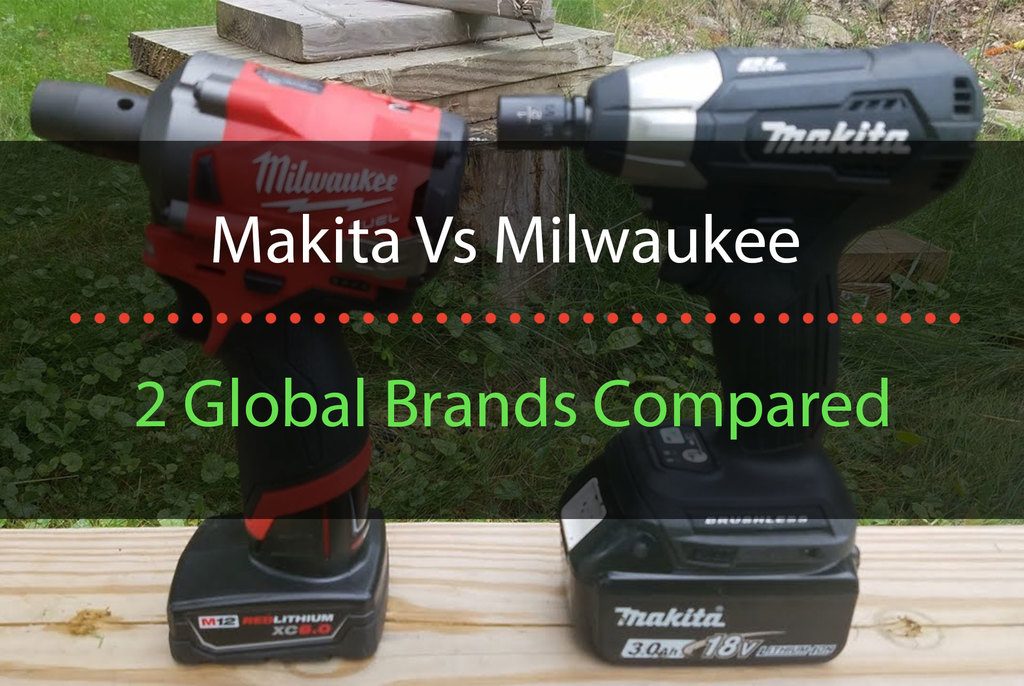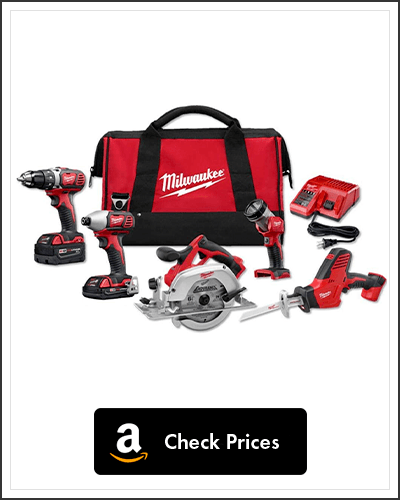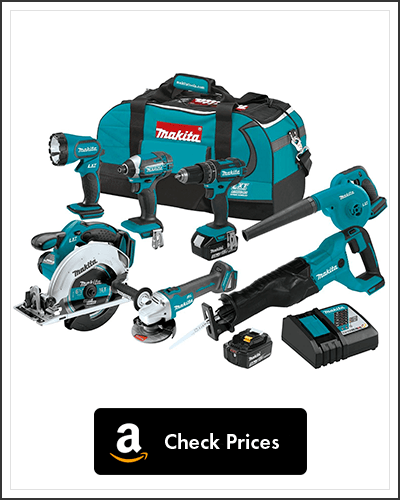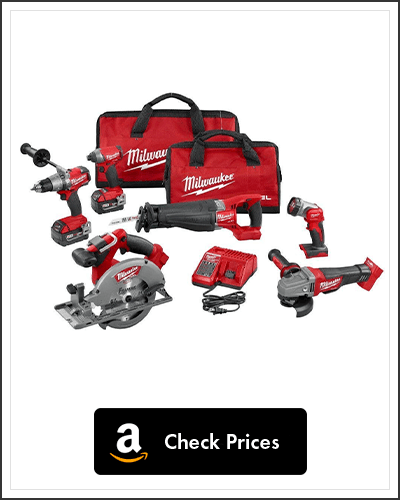- You are here:
- Home »
- Blog »
- Reviews
- » Makita vs Milwaukee

Makita vs Milwaukee
Makita and Milwaukee are two of the worlds largest and most recognizable manufacturers of power tools and accessories. So you may be asking yourself which of the two have the better tools?
Unlike comparing DeWalt and Milwaukee, who’s performance mainly comes down to personal preference and historical value; the difference between Makita and Milwaukee is as vast as they come.
A Quick Breakdown of the Companies
Without going into too much detail, here is a quick comparison guide for the companies.
| Makita | Milwaukee |
| Est. 1915 in Nagoya, Japan | Est. 1924 in Milwaukee, Wisconsin |
| Began business as an electric tool repair business | Began business as an electric tool repair business |
| Headquarters are located in Sumiyoshi-cho Anjo, Aichi, Japan | Headquarters are located in Brookfield, Wisconsin |
| No parent company, nor subsidiaries | Own by the Chinese company Techtronic Industries Co. Ltd. |
| 10 plants, located in 8 countries (including the US) manufacture their tools | Manufacturing is primarily outsourced to China |
| Power tools tend to be light and comfortable to use | Power tools tend to be on the heavier side, and can be more difficult to use |
As you can see, with both companies having a similar beginning, and offering employment opportunities around the world, including the US, our own preference would have to come down to performance, reliability, and value for money only.
Price Comparison
Here we are going to be comparing a couple of cordless combo kits, what’s included in the package, and their average price tag. When ordering online there is one thing that you may need to be mindful of, and that is that Makita does offer something that Milwaukee does not. As Makita is marketing their products towards those without extensive tradesmen knowledge, they tend to include far more information with their combo packs. Not only are they offering the usual sales pitch information that’s written to up sell their products, they also provide more basic information. Basic information such as, which tools are included in the pack, how many batteries are there and what sizes are included, and basic descriptions for some of the accessories.
This is something that Milwaukee have been known to overlook, instead relying on the end users own knowledge to understand what they are looking at. Sometimes the content can be found in the title, or itemized in the description, but more often then not, you will need to determine what is in the kit for yourself by either contacting the supplier and asking questions, or by trusting your own assessment of what is shown in the image.
The 5 piece Makita and Milwaukee combo kits contain similar power tools. Each having a hammer drill, impact drill, reciprocating saw, circular saw, and 2 batteries, a touch, and a carry tool bag. Yet there is an average price difference of $160.00, between the two kits. This difference is where you are literally getting what you pay for. Makitas are much cheaper then Milwaukees as they are of a lower quality, are made from cheaper materials, and are not as powerful or as durable as the Milwaukee power tools. This price disparity becomes more noticeable with the more powerful tools, as seen below.
Even though the 7 piece Makita combo kit has one additional power tool, the Blower, it still costs less then half the price of the 6 piece Milwaukee combo kit. At the time of writing this article this Makita combo kit was even on sale for just $482.88, making the price disparity a whopping $787.12. Despite this staggering price difference, we ourselves would personally view the Makita combo kit as a waste of money for anyone who plans on using their tools regularly.
So Which Brand is the Best Value For Money, Makita or Milwaukee?
Which brand you choose will ultimately come down to which brand has the most value for money for yourself. Hands down without a doubt, Milwaukee would be the best value for money for a professional tradesmen. Their tools are by far, much more durable, better performing, and reliable enough to be counted on to work for years to come.
Makita… not so much. The price disparity between Makita and Milwaukee is there for a reason. Simply put, Milwaukee tools are designed and made for the professionals. They are rugged and durable, made from high quality parts, and engineered to be both powerful and efficient. Makita on the other hand, is made more for the home DIY, weekend tradesmen, hobbyists, and amateurs alike.
Not everyone can afford the expensive price tags of a Milwaukee. So if you are on a budget, just need a power tool to tie you over for a one off task, or looking for something that can take care of the odd job here and there, then Makita’s drastically lower prices might be just what you are after. Should you be looking at extensive use over a long period of time, then a Makita is just going to be a waste of money and you would be better off just buying a Milwaukee in all honesty.




